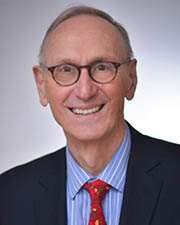



Recent extreme weather – and related environmental conditions – has made the need to address climate change more inescapable than ever. From the immediate devastation of wildfires to the reduced air quality of their far-reaching smoke plumes to the relentlessness of heat domes and flash flooding, the case for reducing carbon emissions is irrefutable.
New York City residents experienced the impact most notably in June, when the city’s world-famous skyline disappeared behind a blanket of smoke from Canadian wildfires. In late September, relentless rain caused flooding in 150 schools and disrupted much of the subway system – with virtually every subway line at least partly suspended.
Fortunately, despite those impacts, New York City is setting a global pace when it comes to reducing carbon emissions from its own buildings – the single-largest source of greenhouse gas emissions in New York City – and this past summer has been a pivotal one in that respect.
In 2019, the City of New York enacted Local Law 97, setting limits on greenhouse gas emissions from about 40,000 designated buildings starting in 2024 – with an initial goal of a 40% reduction by 2030. This past July 1st, therefore, marked the six-month warning before fines for non-compliance begin to accrue on January 1, 2024. Mayor Eric Adams has since proposed rules that provide a way for property owners to avoid penalties in 2024 under certain circumstances.
That law has already stimulated vast retrofitting by the owners of affected properties. It has also generated new interest – especially given the city’s ban on natural gas in new buildings – in a form of energy largely overlooked previously in New York City: geothermal ground source energy. Here New York City is again setting an early pace for the nation and the world.
Geothermal ground source heat pump energy is thermal energy extracted or stored in the ground subsurface. That energy can be accessed from lot areas to provide efficient heating and cooling for nearby buildings. Its great benefit is that the stored thermal energy is reusable. Electric energy is needed to access it but at a reduced level that helps make the electric grid more sustainable.
For individual properties, a geothermal ground source heat pump system works as follows: a series of pipes buried in vertical wells, or in some locations submerged horizontally below ground, allow fluid to be circulated to the building’s heat pump system. This system provides heated or cooled air, water, or refrigerant for the building. In winter the heat pump extracts heat from the ground. In summer the reverse occurs: moving heat from the building into the ground.
In 2018, we helped pioneer for the City of New York the first Geothermal Ground Source Screening Tool. It lets property owners easily assess the cost-effectiveness of geothermal heating and cooling for every lot in the city – nearly 900,000 lots. It provides a rapid understanding of any property’s potential, given the site’s mixture of lot size, topography and building type.
The potential revealed by the screening tool is now bearing significant fruit. In late May, New York City’s first multi-family geothermal project topped out in Coney Island. The 16-story residential tower at 1515 Surf Ave. will include 463 apartments, with 139 of them designated as affordable. Its geothermal system will use the earth to heat and cool the property and power its water systems, eliminating the need for equipment running on fossil fuels.
This summer, the last of 320 boreholes were being drilled on a full city block along the East River in Greenpoint in Brooklyn. There a 789,000 s/f mixed-use complex of five connected buildings – known as 1 Java St. – is scheduled to open in late 2025, making it the largest residential apartment complex in the United States to be heated by geothermal energy.
The 320 vertical boreholes, each reaching precisely 499 feet deep, are spaced 15 feet apart and connected to 32 horizontal circuits. The geothermal system is expected to reduce annual carbon dioxide emissions from heating and cooling by 53%, compared to a typical HVAC system that runs on fossil fuels. The developer estimates that the geothermal system will cost about 6% more and that the cost will be more than made back over 20 years.
As New York City’s Geothermal Ground Source Screening Tool reveals, geothermal systems are typically best suited to the city’s outer boroughs, where property lots are often wider and population density is lower, but increasingly larger properties in Manhattan are adopting geothermal systems as well. At least two major new Manhattan office buildings are employing both geothermal and air source heat pump options to heat and cool the structures. St. Patrick’s Cathedral has already installed a geothermal system – with 10 boreholes – that replaced its outdated HVAC system.
Amid recent extreme weather, New York City is showing the nation and world how to pivot to clean energy. Geothermal ground source energy is a key and growing part of that approach.
Charles Copeland is president and CEO and Tristan Schwartzman is principal and director of Energy Services of Goldman Copeland Consulting Engineers, Manhattan N.Y.